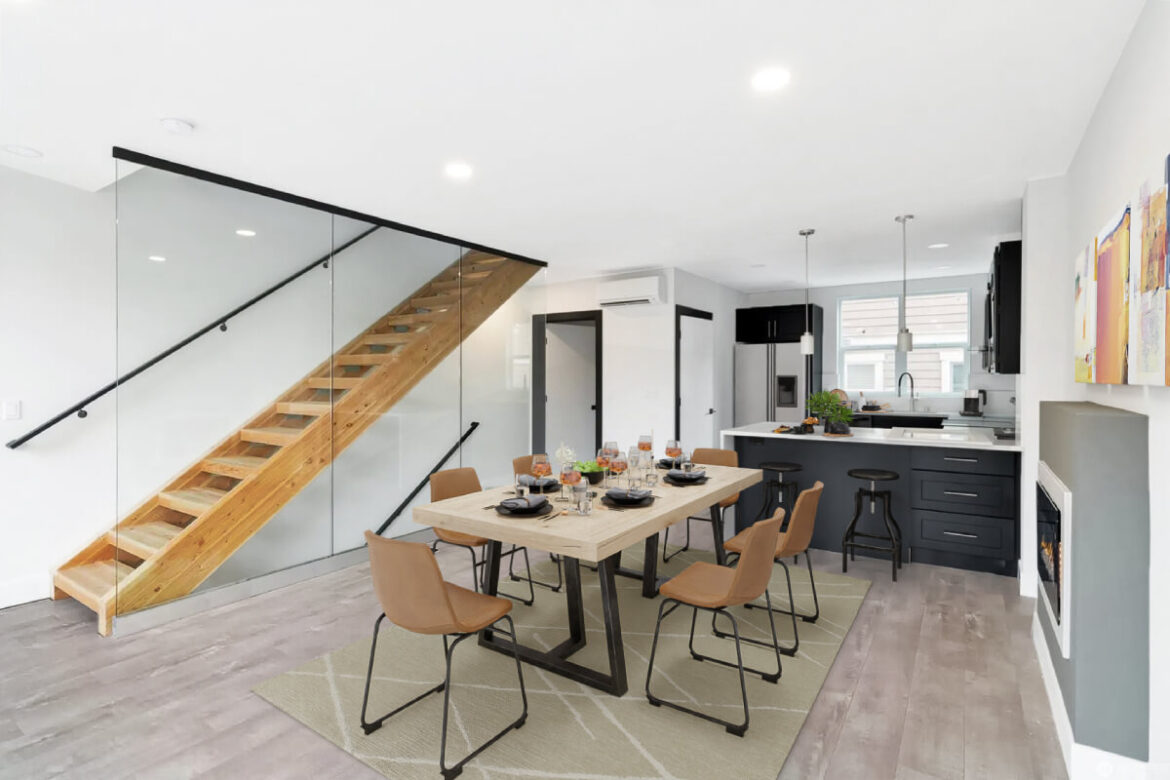Industrial style, also known as industrial chic, is a design aesthetic that celebrates the natural, rugged beauty of the bygone manufacturing age. It incorporates the practical aspects of warehouses, factories, and other industrial structures, characterized by minimal architectural details. The aesthetics involve a mix of weathered woods, exposed bricks, metal finishes, and salvaged objects, creating an environment that balances hard, rough edges with soft, inviting warmth. When this raw and edgy Industrial style meets the technologically advanced domain of virtual staging, it creates an enticing visual appeal that takes the digital real estate industry by storm. Industrial style in virtual staging gives empty spaces life and transforms them into digitally furnished residences that evoke the past while reflecting modern comfort and elegance. It is a low-cost and efficient solution that emphasizes the property’s potential and reflects the rising popularity of this urban-chic style among modern homeowners.
This article will discuss the various elements of the Industrial style in virtual staging and how they can be used to create appealing pictures for real estate marketing.
Table of Contents
Origin of Industrial Style
The interior design style known as industrial originates in the American urban landscape of the 20th century. However, the style developed as a design idea after significant shifts in urban life and cultural views later in the century. What we now call the industrial style first appeared in the 1960s and 1970s in the main cities of the United States. As industrialization gave way to the rise of the service economy, many former industrial districts were left with a surplus of unused factory and warehouse spaces. Then the need for more authenticity in design and the renovation and reuse of places was connected with a cultural shift.
In New York City, particularly in neighborhoods like SoHo and Tribeca, artists started turning these abandoned industrial structures into live-work spaces known as lofts. The building’s original architectural features, such as exposed brick walls, industrial lighting fixtures, metal beams and ductwork, concrete floors, and huge, multi-pane windows, were kept due to the need for cost-effective design and the attractiveness of these big, open-concept rooms. The charm of wear and tear defines the attractiveness of industrial décor. Furniture with a sense of history and the signs of use and reclaimed and repurposed materials reflect the authentic industrial look. This resulted in a raw, simple aesthetic that sharply opposed the highly stylized, luxurious interiors that were popular.
In the 1980s and 1990s, the style, characterized by its practical and functional principles, gradually became more widely accepted. A broader audience was attracted to the flexibility, spaciousness, and respect for age and wear patina. The industrial aesthetic began influencing various areas, including commercial spaces such as restaurants and offices, which adapted to create unique and characterful environments. Over time, the industrial style has evolved and blended with other styles, but its core remains the same. It remains a popular option in interior design due to its authenticity, simplicity, and unrefined allure.
Industrial Style in the 21st Century
The industrial style has indeed evolved and matured in the 21st century while retaining its characteristic elements. While it still celebrates its unfinished, raw, and practical features, it has also embraced refinement and elegance, creating an exciting blend of old and modern. Today the style is characterized by its minimalist color palette, primarily focusing on darker hues and earthy tones such as black, brown, and grays, accented with lighter neutrals for balance. This style favors open-concept rooms with high ceilings, elegantly combining multiple living areas into a harmonious environment.
One of its hallmarks is the fantastic contrast between polished and raw materials, typically pairing glass with salvaged or reclaimed wood. In the 21st century, the style strongly incorporates metal materials such as iron, steel, copper, and brass, which enhance exposed architectural features such as wood paneling, ductwork, and beams. Also, the charm of textured surfaces, like brick accent walls or concrete floors, enhances the overall aesthetic. While embracing its raw roots, the industrial style incorporates sleek modern finishes alongside antique elements, creating a unique blend of old and new.
In the twenty-first century, industrial style is often combined with other design elements to create more comfortable and appealing settings. It’s not unusual to see an industrial-style room with rustic, farmhouse, or mid-century contemporary features. To smooth the overall appearance and feel, exposed brickwork, ducting, and beams are often matched with comfortable seats, warm lighting, and soft fabrics. Technological advancements in the 21st century have also influenced the industrial style. Today’s industrial style in virtual staging can assist audiences in readily visualizing the location and ensuring that the design meets their needs and preferences.
Characteristics of Industrial Style
The industrial style is unique and easily recognizable thanks to its core characteristics, which include:
Exposed building materials
In industrial-style interiors, it’s common to see structural elements on display. This can include exposed brick walls, visible ductwork, bare concrete or wood floors, and metal beams and pipes. These elements embrace the building’s raw, untouched aesthetic.
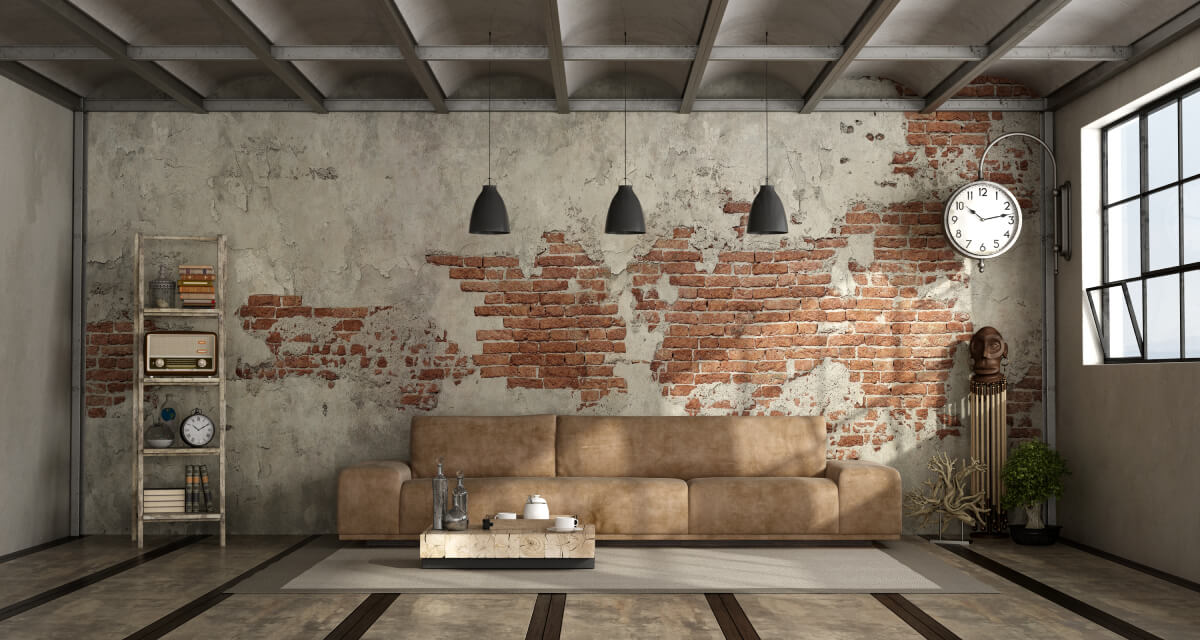
Open floor plan
Inspiration from factories and warehouses, industrial interiors often feature large, open spaces. There are minimal barriers between areas, promoting a sense of openness and flow.
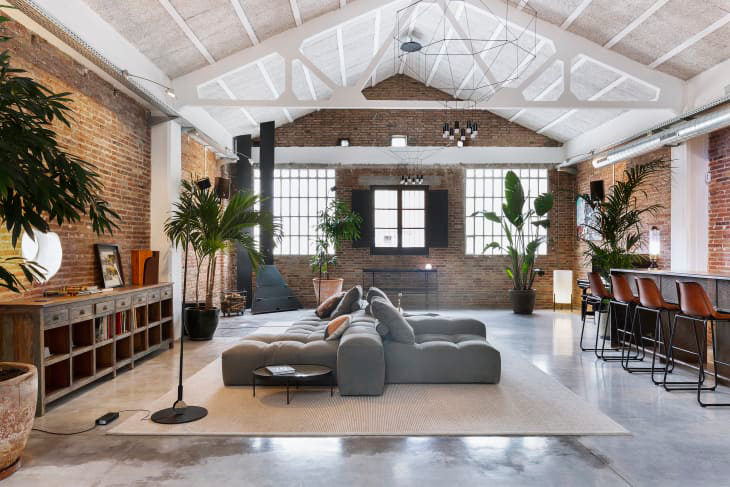
Metal accents
Industrial style heavily incorporates metal, often iron, steel, or other metals, with a raw or tarnished finish. These can be found in lighting fixtures, furniture, railings, etc.
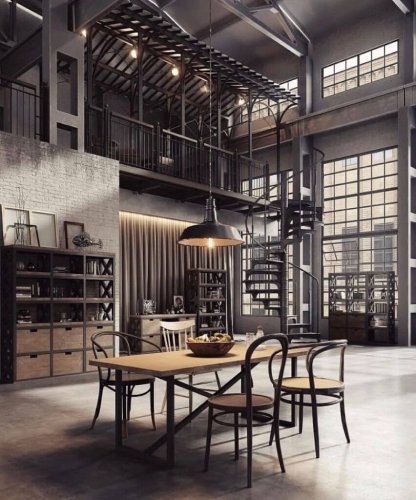
Neutral color palette
Industrial style typically leans towards a neutral, muted color palette that includes shades of gray, black, white, and brown, complementing the natural colors of the raw materials used.
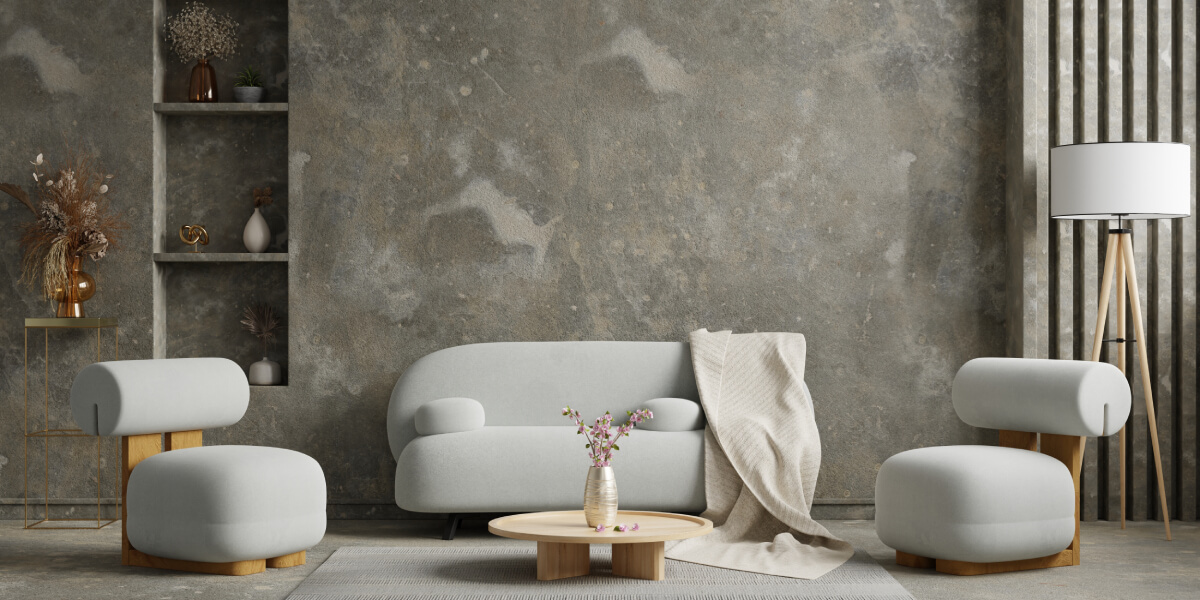
Reclaimed or recycled materials
Industrial design usually employs recovered or recycled materials, reflecting its sustainable ethos. This includes repurposed wood, old factory parts, or even salvaged furniture pieces.
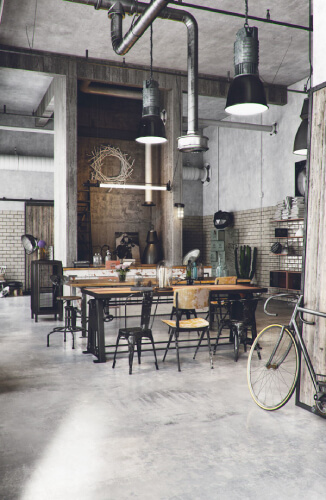
Minimalist décor
Less is more in industrial-style design. Decor tends to be simple and functional, without excess frills or ornamentation.
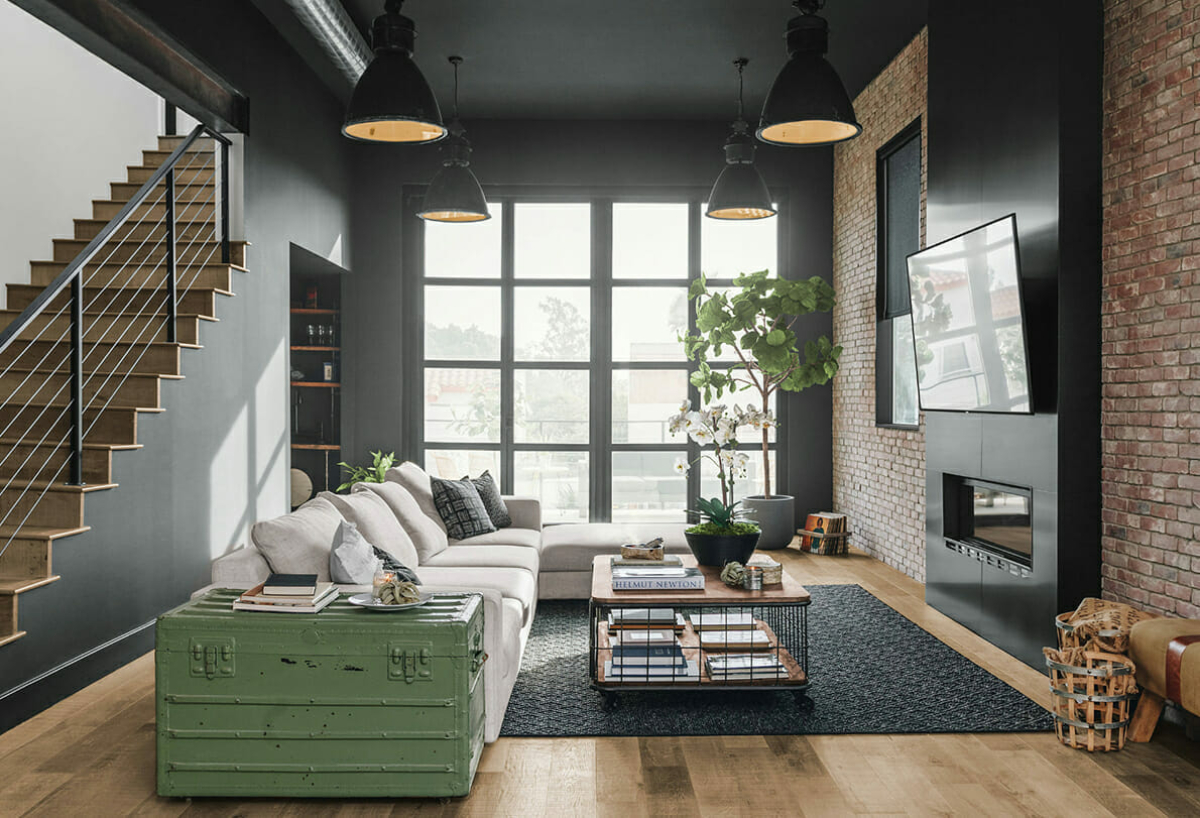
Vintage or antique items
Industrial style often includes vintage or antique items that hint at a bygone industrial era. These can be decorative items or functional pieces of furniture that add character and history to the space.
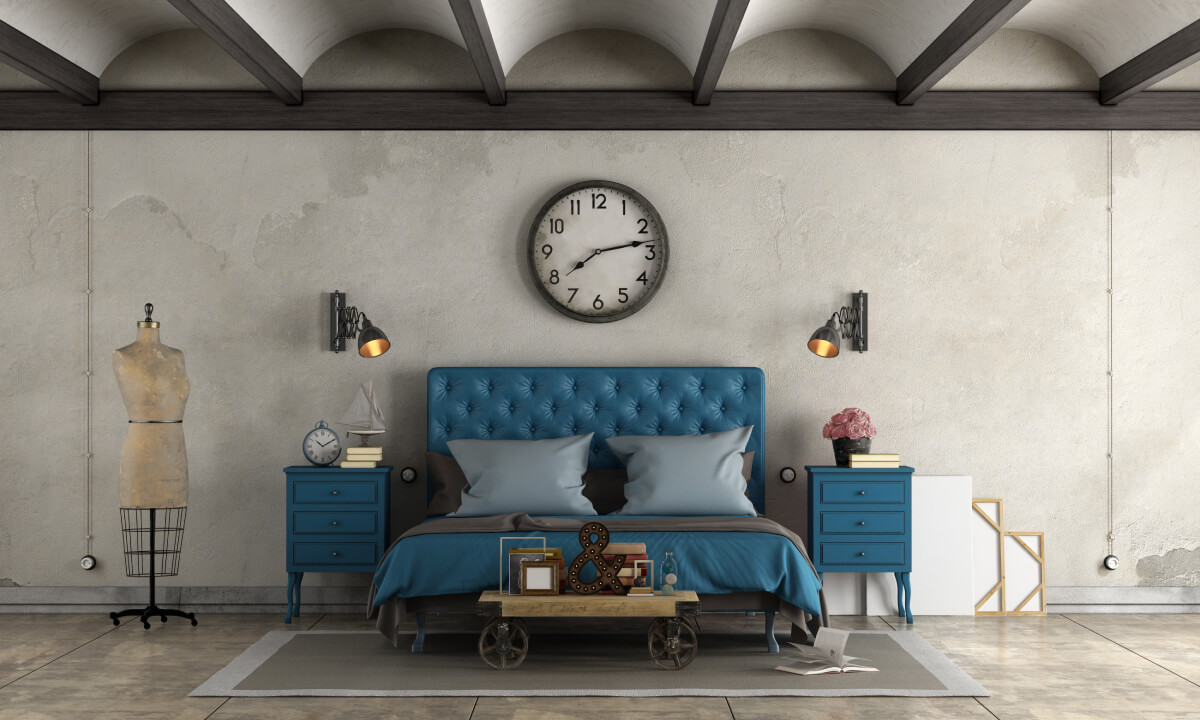
Industrial lighting
Lighting in industrial-style interiors is practical and simple. Pendant lights with metal shades, Edison bulbs, and floor lamps with a factory aesthetic are common choices.
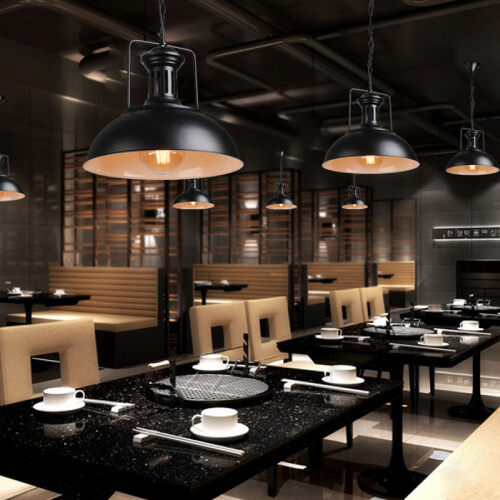
Virtual Staging with Industrial Style
Industrial style in virtual staging is a new and exciting approach. Virtual staging allows for detailed visualization of the spaces’ potential, helping potential buyers or renters visualize an empty or differently styled space as an inviting industrial-chic home or office.
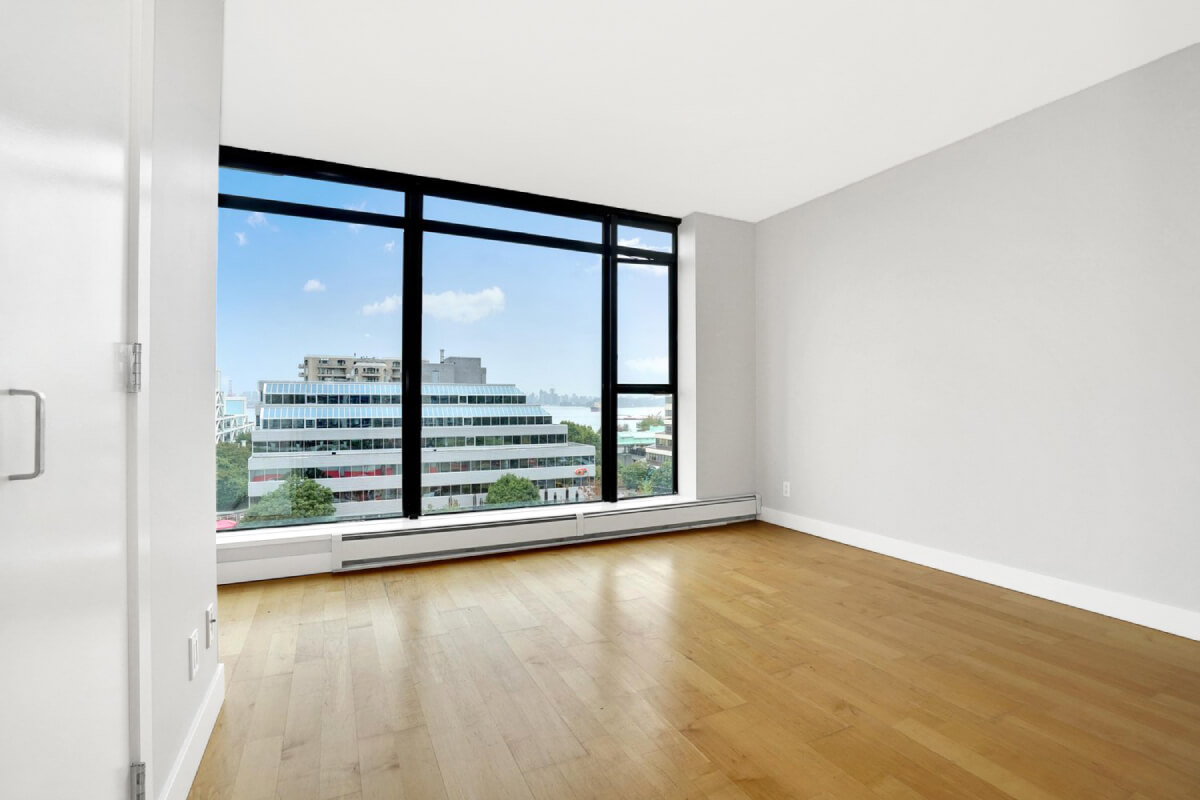
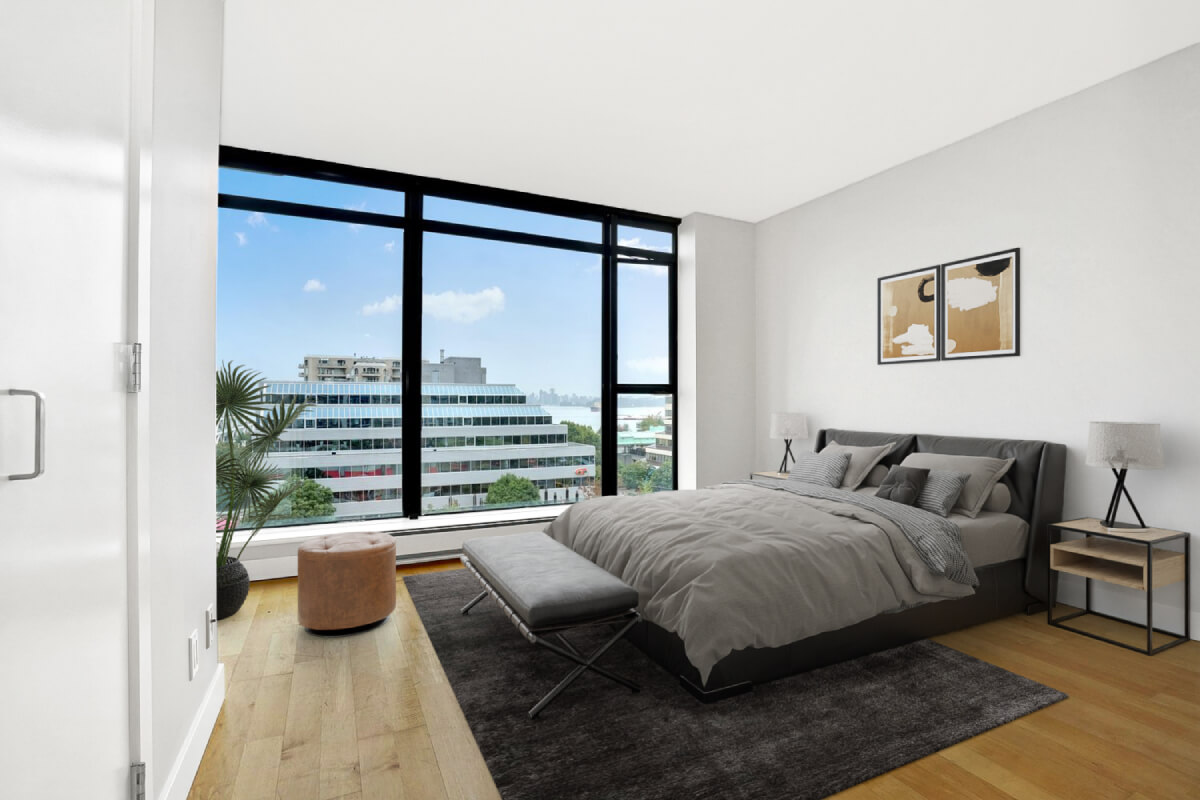
To order Virtual Staging at an unbeatable price click below!
After virtually staging a bedroom with an industrial style, the bedroom evolves into a haven of tranquility that embraces raw elegance. The bare or exposed brick walls create an edgy backdrop, complemented by a simple, sleek metal bed frame and reclaimed wood side tables. A vintage rug with muted tones under the bed adds warmth to the concrete or wood floors. The lighting fixtures maintain the industrial ethos – a metal pendant light hanging beside the bed and a minimalist floor lamp at one corner. Accents like a distressed leather armchair and minimalist black-and-white art pieces on the wall enhance the room’s character, embodying industrial charm and modern comfort.
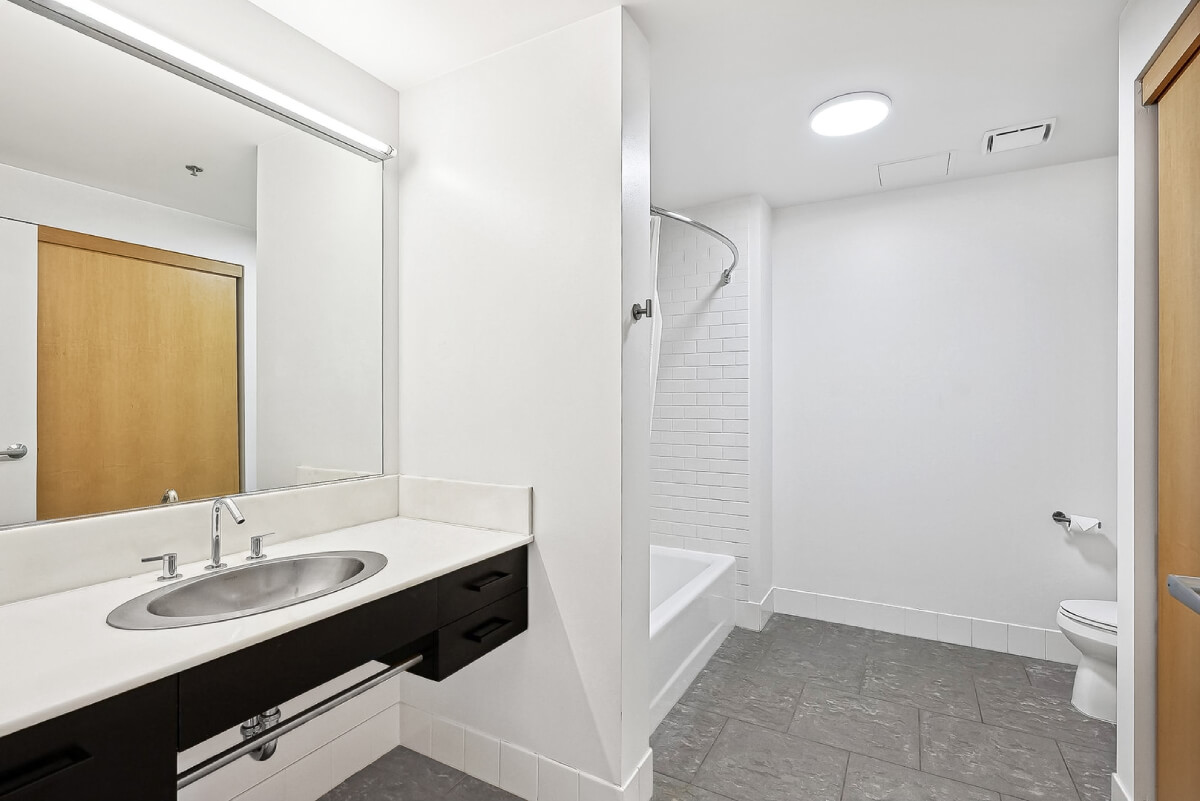
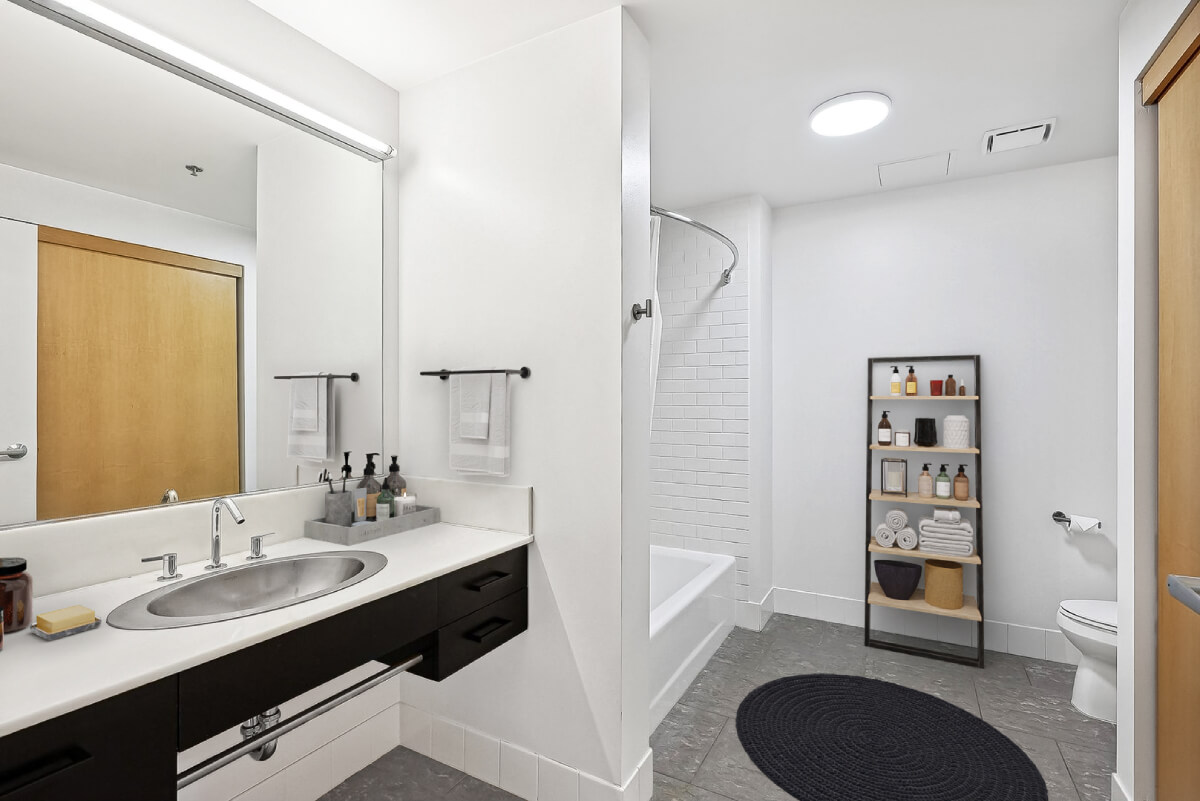
To order Virtual Staging at an unbeatable price click below!
The virtual industrial-style bathroom is a space that combines function with a unique aesthetic, and the exposed facilities add an authentic touch. A sleek vanity made from reclaimed wood stands against the backdrop of a concrete or tiled wall. Metal accents appear in fixtures and faucets with a brushed or matte finish. A frameless mirror enhances the sense of space, while a sliding barn door adds a rustic industrial touch. The open shelving system made from raw wood and pipes is added for storage, completing the look.
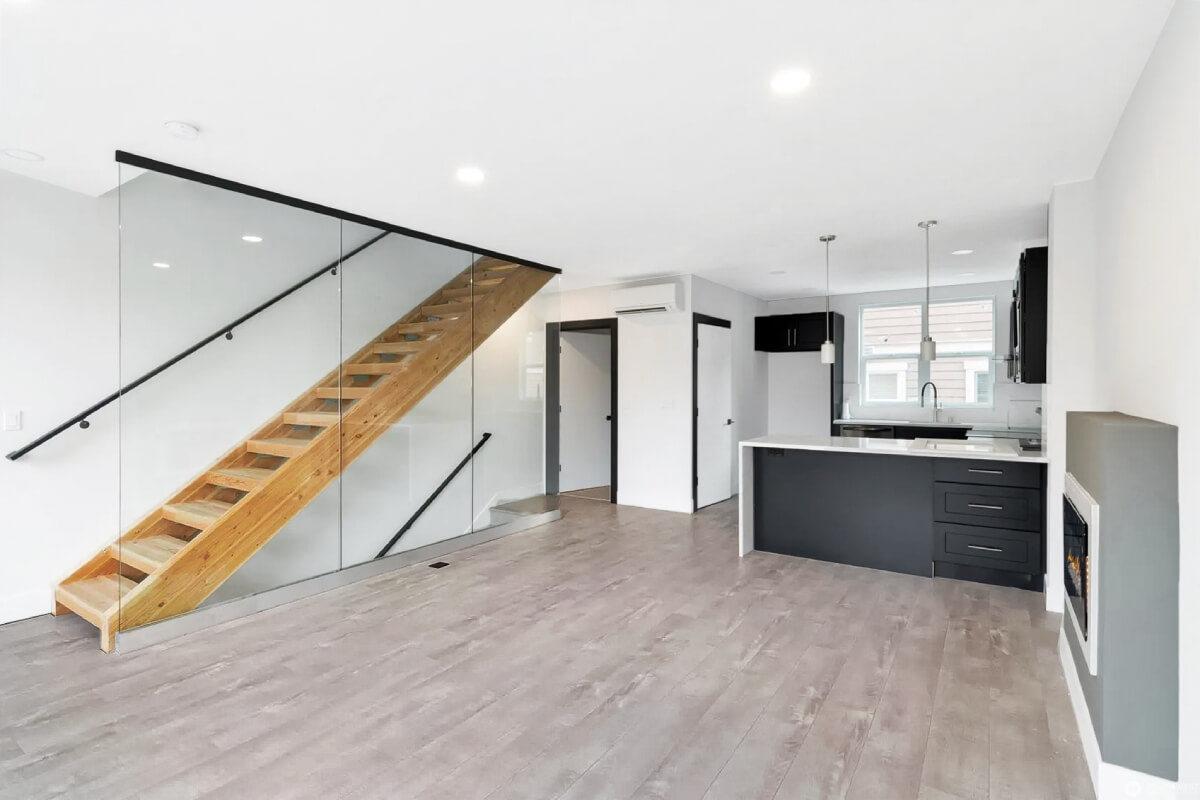
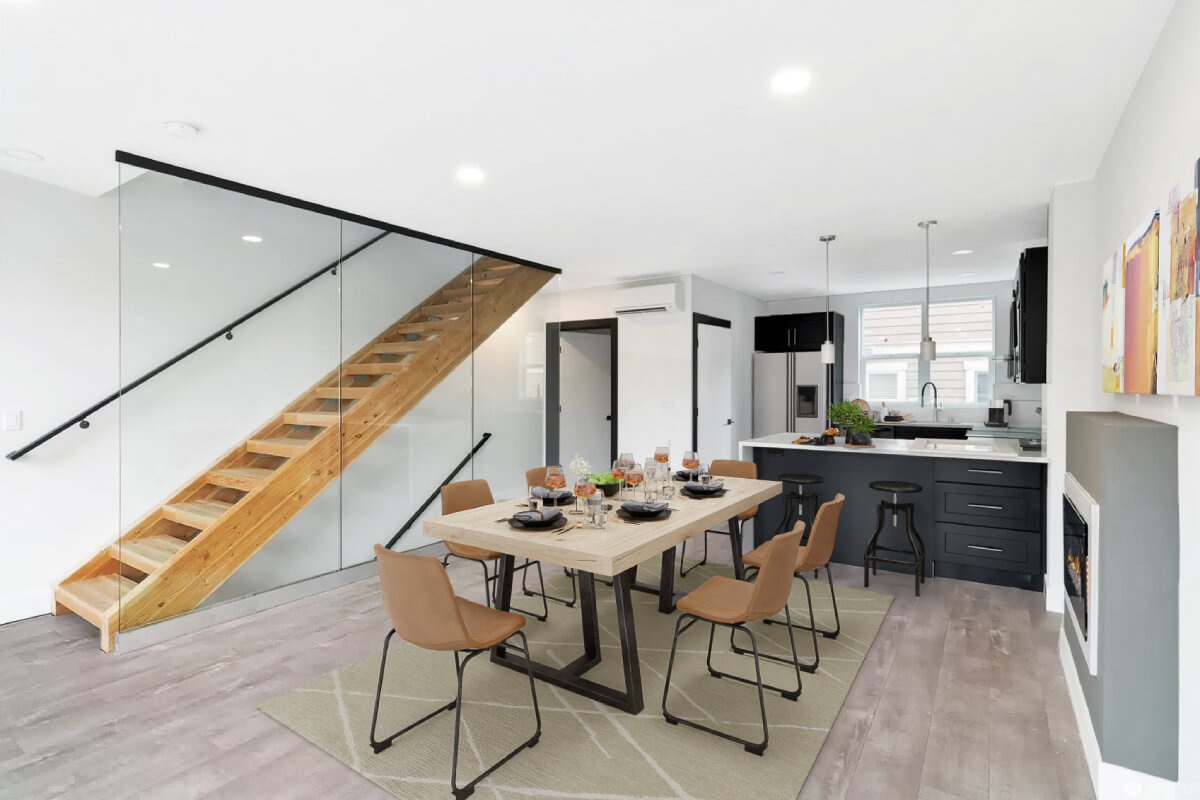
To order Virtual Staging at an unbeatable price click below!
In an industrial style, the dining room exudes a communal and inviting vibe. At the heart of the room is a robust, reclaimed wood dining table surrounded by metal chairs with a worn-out finish. An overhead pendant light fixture with Edison bulbs provides warm illumination. A bar cart made from a mix of weathered wood and metal sits in one corner, ready for entertaining. Exposed brick walls add texture to the space, and a large, factory-style window allows natural light to cascade in, enhancing the room’s overall mood.
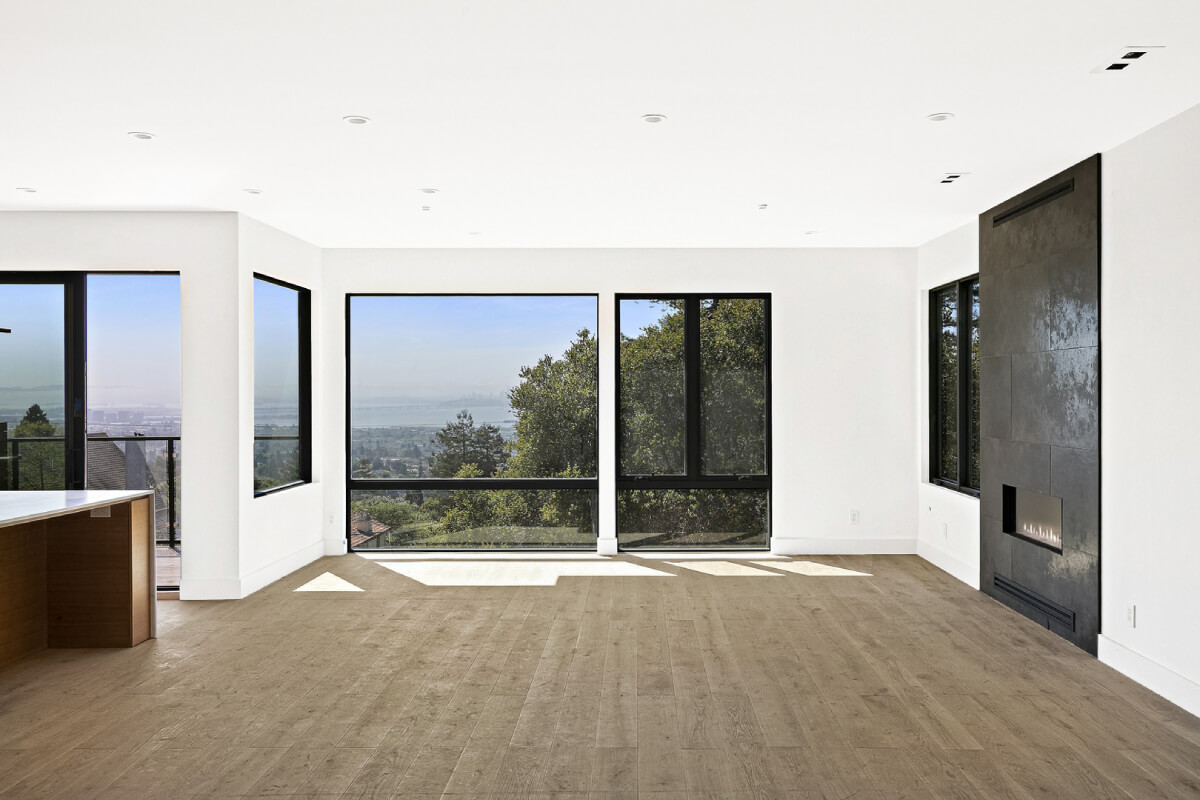
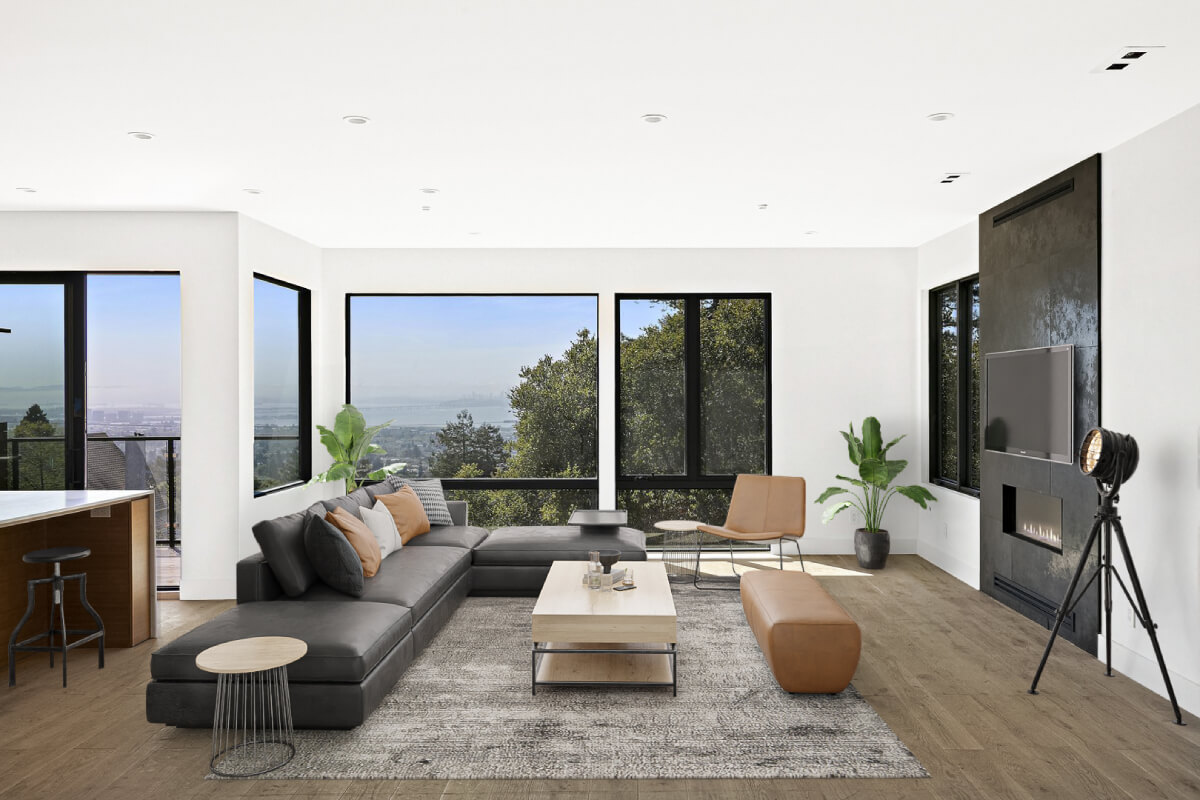
To order Virtual Staging at an unbeatable price click below!
After virtual staging, the living room in an industrial style becomes the model of urban chic. The design showcases a plush leather sofa paired with a distressed wood and metal coffee table on a vintage rug. A mix of metal and wood shelving units provides space for books, plants, and decorative items. Industrial floor lamps ensure the room is well-lit, while large, multi-pane windows welcome ample natural light. The exposed brick wall is a perfect backdrop for minimalist artwork or vintage industrial gear turned into wall art. The room emanates a sense of comfort while retaining a sleek, modern aesthetic.
When to Use the Industrial Style?
The industrial style appeals to a wide range of people, largely due to its versatility and unique aesthetic. Here are a few types of people who typically gravitate toward this style:
Artists and creatives
The open-concept layout, high ceilings, and raw aesthetic of industrial design often appeal to artists and creatives who seek a space that offers both inspiration and flexibility.
Urban dwellers
Those living in city environments, particularly in converted lofts or apartments in former industrial buildings, often appreciate this style as it maintains their home’s original character and history.
Minimalists
People who prefer a “less is more” approach to décor can appreciate the functional, quiet nature of the industrial style. The focus on raw materials and lack of unnecessary ornamentation aligns well with a minimalist philosophy.
Environmentally-conscious individuals
Given the emphasis on repurposed and recycled materials, the industrial style can appeal to environmentally conscious people who value sustainable design practices.
Lovers of vintage and antiques
Those who enjoy the charm of vintage items and antiques may find the industrial style attractive for incorporating older elements and its appreciation for the patina of age.
Tech-savvy individuals
With the advent of virtual staging and design technologies, tech-savvy individuals might find the industrial style appealing for its ability to blend historical elements with modern technology.
Final Word
The industrial style in virtual staging provides a different choice, with its unique combination of raw, practical aesthetics and the beauty of recycled materials. Its versatility makes it an appealing choice for various spaces, from lofts and apartments to commercial venues. This style effectively highlights structural elements’ inherent beauty and personality rather than concealing them. In virtual staging, the industrial style transforms empty spaces into visually stunning spaces that blend the old-world charm of factories and warehouses with contemporary design. Its enduring appeal lies in its ability to celebrate history, authenticity, and sustainability, making it a timeless choice in interior design and virtual staging.
FAQ
One of the beautiful aspects of the industrial style is its versatility. It can be seamlessly combined with other styles, such as rustic, farmhouse, or modern, to create a unique and personalized space.


